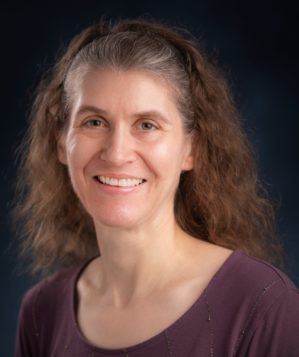Alicia K. Byrd, Ph.D.
 Assistant Professor
Assistant Professor
Associate Member Winthrop P. Rockefeller Cancer Institute
Ph.D., University of Arkansas for Medical Sciences
B.S., University of Missouri-Rolla (now Missouri University of Science and Technology)
Email: AKByrd@uams.edu
Office: 501-526-6488 – Biomedical Research Center 1 B405G
Lab: 501-686-5194 – Biomedical Research Center 1 B408
Fax: 501-686-8169
DNA Damage Response
DNA damage occurs tens of thousands of times per day in human cells from both endogenous and environmental sources. In order to preserve the genetic material, cells have evolved multiple mechanisms to detect and repair DNA damage. However, inaccurate DNA repair can cause genomic instability such as chromosomal rearrangements and expansion of repetitive sequences which can lead to the development of cancer or diseases such as Fragile X Syndrome. One area my research focuses on is the enzymes that regulate the DNA damage response. In particular, I am interested in a family of enzymes called helicases which remove secondary structures from DNA and RNA. At least 10 different human helicases are involved in DNA repair.
My research is focused on understanding the fundamental mechanisms of these enzymes using biophysical, biochemical, and cellular techniques including ensemble and single molecule kinetics, proteomics, and genomics. The molecular mechanisms of these proteins, both individually and as components of multi-protein complexes, are of interest, as are the effects of posttranslational modifications on their activity.
Selected Publications
Osei B, May BH, Stiefel CM, West KL, Zafar MK, Thompson MD, Bergstrom E, Leung JW, Enemark EJ, Byrd AK†. (2024) Rare SNP in the HELB gene interferes with RPA interaction and cellular function of HELB. [Abstract]
Thompson MD, Byrd AK†. (2024) Untargeted CUT&Tag and BG4 CUT&Tag are both enriched at G-quadruplexes and accessible chromatin. bioRxiv 2024.09.26.615263 [Abstract]
He X, Yun MK, Li Z, Waddell MB, Nourse A, Churion KA, Kreuzer KN, Byrd AK, White SW. (2024) Structural and functional insights into the interaction between the bacteriophage T4 DNA processing proteins gp32 and Dda. Nucleic Acids Res. 52:12748-12762. [Abstract]
Hong Z*, Byrd AK*†, Gao J, Das P, Tan VQ, Malone EG, Osei B, Marecki JC, Protacio RU, Wahls WP, Raney KD†, Song H†. (2024) Eukaryotic Pif1 helicase unwinds G-quadruplex and dsDNA using a conserved wedge. Nat Commun; 15:6104. [Abstract]
Gao J, Proffit DR, Marecki JC, Protacio RU, Wahls WP, Byrd AK†, Raney KD†. (2024) Two residues in the DNA binding site of Pif1 helicase are essential for nuclear functions but dispensable for mitochondrial respiratory growth. Nucleic Acids Res. 52:6543-6557. [Abstract]
Byrd AK†, Malone EG, Hazeslip L, Zafar MK, Harrison DK, Thompson MD, Gao J, Perumal SK, Marecki JC, Raney KD (2022) A structural feature of Dda helicase which enhances displacement of streptavidin and trp repressor from DNA. Protein Science. 31:407-421. [Abstract]
Thompson MD, Malone EG, Byrd AK†. (2022) Use of substrates with multiple fluorophores to simultaneously monitor unwinding of multiple duplexes by helicases. Methods in Enzymology. 672:1-27. [Abstract]
Malone EG, Thompson MD, Byrd AK†. (2022) Role and Regulation of Pif1 Family Helicases at the Replication Fork. Int J Mol Sci.23:3736. [Abstract]
Zafar MK, Hazeslip L, Chauhan M, Byrd AK†. (2020) Expression of human DNA helicase B is affected by G-quadruplexes in the promoter. Biochemistry. 59: 2401–2409. [Abstract]
Hazeslip L, Zafar MK, Chauhan MZ, Byrd AK. (2020) Genome maintenance by DNA helicase B. Genes (Basel).11(5):E578. [Abstract]
Complete List of Published Work in My Bibliography
